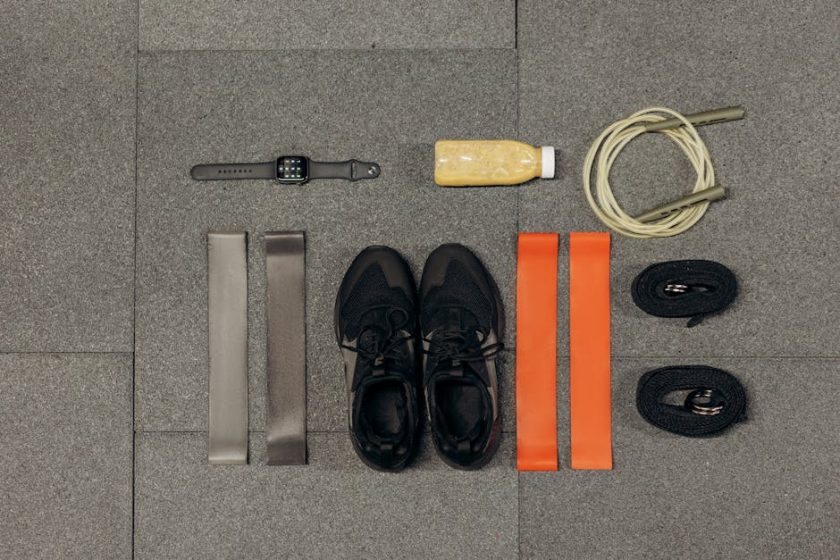How to Use a Fitness App for Personalized Weight Loss
In today’s fast-paced world, achieving weight loss goals can be a daunting task. However, the rise of technology has made it easier than ever to stay on track with personalized fitness apps. These apps offer tailored programs, tracking features, and motivational tools that can help you achieve your desired weight loss objectives. In this blog post, we’ll explore how to effectively use a fitness app for personalized weight loss, ensuring that you make the most of these digital tools to reach your goals.
Understanding the Benefits of Fitness Apps
Before diving into the specifics of using a fitness app, it’s important to understand the benefits these applications offer. According to recent statistics, the global fitness app market is expected to grow at a compound annual growth rate of over 23% from 2021 to 2028. This surge in popularity is not without reason. Here are some key benefits:
- Personalization: Fitness apps offer tailored workout and nutrition plans based on your goals, current fitness level, and preferences.
- Convenience: With a fitness app, you have a virtual trainer available 24/7, allowing you to work out anytime, anywhere.
- Tracking and Accountability: Most apps come with tracking features for workouts, meals, and progress, which help keep you accountable.
- Community and Support: Many apps include community features where you can connect with others for support and motivation.
Choosing the Right Fitness App for You
Not all fitness apps are created equal, and finding one that aligns with your personal goals is crucial. Here are some tips for selecting the right app:
Identify Your Goals
Before downloading an app, clearly define your weight loss goals. Are you looking to lose a specific amount of weight, tone up, or improve your overall fitness? Your goals will guide you in choosing an app that offers the right features.
Research Features and Reviews
Once you’ve identified your goals, research various apps and read user reviews. Look for apps that offer features like personalized workout plans, meal tracking, and community support. A popular app like MyFitnessPal offers comprehensive tracking for both nutrition and exercise.
Consider Compatibility and Cost
Ensure the app is compatible with your device and fits within your budget. While some apps are free, others offer premium features for a subscription fee. Weigh the cost against the value of the features offered.
Setting Up Your Fitness App for Success
Once you’ve chosen a fitness app, it’s time to set it up for success. Here are some steps to get you started:
Create a Profile
Set up your profile with accurate information about your current weight, height, age, and activity level. This information is crucial for the app to generate personalized recommendations.
Set Realistic Goals
Use the app to set realistic and achievable weight loss goals. Many apps, like Lose It!, allow you to set a target weight and a timeline, helping you stay focused and motivated.
Sync with Wearable Devices
If you own a wearable device like a Fitbit or Apple Watch, sync it with your app. This integration allows for seamless tracking of your activity, providing a more comprehensive view of your progress.
Maximizing the Features of Your Fitness App
Fitness apps come loaded with features designed to enhance your weight loss journey. Here’s how to make the most of them:
Utilize Meal Tracking
Use the app’s meal tracking feature to log your daily food intake. This not only helps you stay within your calorie goals but also provides insights into your nutritional habits. According to a study published in The American Journal of Preventive Medicine, those who kept a food diary lost twice as much weight as those who didn’t.
Follow Workout Plans
Many apps offer workout plans tailored to your goals. Follow these plans, adjusting the intensity as needed to suit your fitness level. Apps like Nike Training Club offer a variety of workouts, from beginner to advanced levels.
Engage with the Community
Join online communities within the app to connect with others pursuing similar goals. Sharing your progress and challenges can provide motivation and accountability. According to research, individuals who engage in social groups during weight loss efforts are more likely to succeed.
Monitoring Progress and Adjusting Your Plan
Consistently monitoring your progress is key to achieving your weight loss goals. Here’s how to do it effectively:
Regular Check-Ins
Schedule regular check-ins to assess your progress. Many apps provide weekly or monthly summaries of your activities, calories burned, and weight changes. Use this data to evaluate your success and make necessary adjustments.
Adjust Goals as Needed
If you’re not seeing the desired results, don’t be afraid to adjust your goals or strategies. Consult with fitness professionals if necessary and modify your plans to better suit your needs.
Celebrate Milestones
Celebrate your achievements along the way, whether it’s losing a few pounds or completing a challenging workout. Celebrating milestones keeps you motivated and reinforces positive behavior.
Conclusion
Using a fitness app for personalized weight loss is a powerful tool that can lead to significant results. By choosing the right app, setting it up effectively, and maximizing its features, you can create a tailored fitness journey that suits your needs and preferences. Remember, consistency is key, and by staying committed to your goals and regularly monitoring your progress, you’ll be well on your way to achieving your weight loss objectives. Embrace the digital age of fitness and let technology be your guide in this transformative journey.

